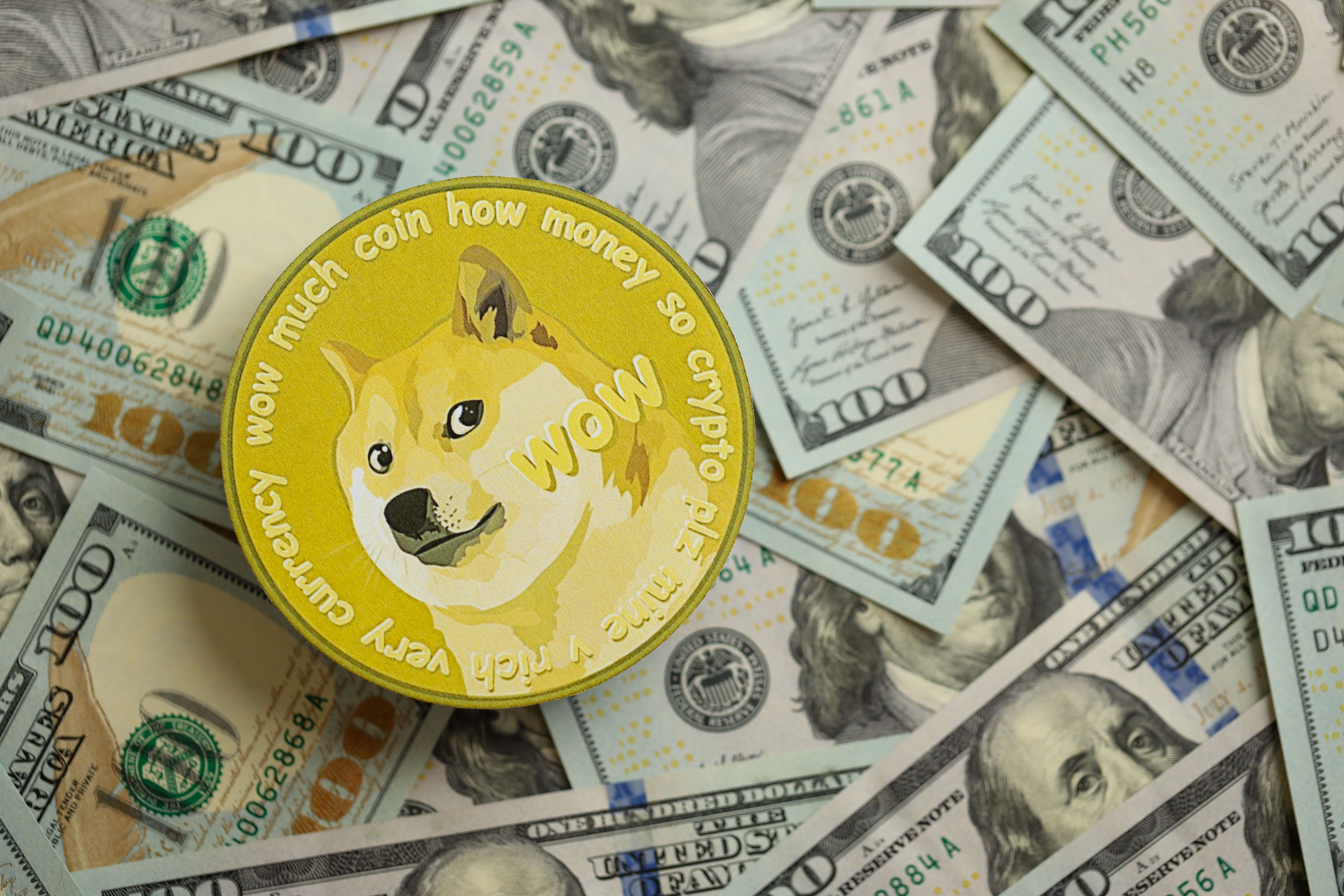
Dogecoin has been subjected to high selling pressure over the last week, with most large holders selling substantial amounts of their holdings. The meme cryptocurrency dropped to a level below the $0.18 mark, losing approximately 5 billion of its market capitalization. According to data from the blockchain analytics platform Santiment, wallets holding 10 million to 100 million DOGE sold approximately one billion coins during this period. Analyst Ali Martinez highlighted this trend in his commentary, which noted that outflows from these whale addresses have continued since mid-October. These wallets usually consist of early investors and traders in the market who stacked their positions at previous prices. The selling activity caused the market capitalization of Dogecoin to decrease by $30.6 billion, from $55.7 billion on October 28 to $25.1 billion on November 4. On Tuesday, the cryptocurrency dropped to a low price of $0.1657, representing a 4.75% decrease over the last 24 hours. This was behind the overall cryptocurrency market, which fell by approximately 3.7% during the same period. Technical Breakdown Triggers Cascade Effect The drop became more rapid as DOGE crossed the support group at the crucial level of around $0.18. This technical glitch led to automatic selling on major cryptocurrency exchanges. This major breach of the most important level resulted in the execution of predetermined exit strategies by many algorithmic trading systems. Fueled positions were a cause of market turmoil. Cryptocurrency derivatives worth over $1.36 billion were liquidated in a single day. Disproportionate to the number of forced closures was Dogecoin. It has been reported that one trader made over 36 million dollars selling DOGE and Ethereum, among other key tokens, when the market was down. Trading Volume Surges Despite Price Drop The activity in the market was also extremely high as prices decreased. There was a 90% increase in daily trading, reaching an average of $ 3.9 billion. The volume spike is indicative of divergent market sentiment. As the big players sold out, they viewed the dip as a buying opportunity for smaller traders. This means that the difference between the whale and the retail activities indicates varying investment strategies. Early accumulators and institutional players made gains after accumulating for several months. Meanwhile, retail participants tried to grab value at lower prices or to trade in a short-term volatility. On-chain data reveals that the whale selling started slowly in mid-October and has escalated in recent days. These sales are systematic, which means that they were an indication of planned profit-taking rather than panic selling. Another possible repositioning by market makers is before future volatility in the traditional financial markets. The cryptocurrency market faces numerous headwinds . The risk appetite has been reduced by increasing interest rates, uncertainty in regulation, and macroeconomic fears. The speculative nature of meme coins and the lack of fundamental usage purposes make Meme coins, including Dogecoin, especially susceptible to sentiment changes.
Coinpaper
You can visit the page to read the article.
Source: Coinpaper
Disclaimer: The opinion expressed here is not investment advice – it is provided for informational purposes only. It does not necessarily reflect the opinion of BitMaden. Every investment and all trading involves risk, so you should always perform your own research prior to making decisions. We do not recommend investing money you cannot afford to lose.
Stream Finance Rocked by $93M Blow—Project’s Stablecoin XUSD Peg Craters to $0.24

On Monday, the decentralized finance (DeFi) protocol Stream Finance announced that an external fund manager misplaced a jaw-dropping $93 million in Stream assets — sparking an immediate investigation and halting all withdrawals and deposits. In the chaos that followed, the DeFi project’s stablecoin XUSD lost its footing, tumbling to a painful low of $0.2473 per Coinpaper

XRP’s Specific Utility Is Gaining Most Traction on Coinbase
Digital finance is entering a new phase. The focus is shifting from retail trading to real business use cases. Across global markets, crypto is now solving real payment problems. Companies are beginning to rely on digital assets for faster and cheaper money transfers. This marks a major step toward mainstream adoption. Analyst and X user SMQKE recently spotlighted Coinbase’s latest earnings call. In that call, CEO Brian Armstrong confirmed a major trend. He said most cross-border payments are business-to-business transactions. Armstrong added that this is where crypto is seeing higher adoption right now. The statement came directly from Coinbase’s Q3 2025 earnings report, revealing that institutional demand is now leading the market. LATEST COINBASE EARNINGS CALL CONFIRMS B2B CRYPTO TRANSACTIONS ARE GAINING THE MOST ADOPTION + XRP SPECIFICALLY FOCUSES ON B2B TRANSACTIONS Coinbase CEO Brian Armstrong: “But the majority of cross-border payments are really like B2B transactions, and that`s the area where… pic.twitter.com/OnGP3q8gnR — SMQKE (@SMQKEDQG) November 2, 2025 Why B2B Payments Are Driving Crypto Growth Business-to-business (B2B) transactions dominate global payment flows. These payments often move across borders and involve large values. Traditional systems are slow and expensive, creating friction for companies. Crypto solutions offer speed, transparency, and lower costs. Coinbase’s data confirms that enterprises are adopting crypto for these reasons. The shift from retail use to business payments marks a turning point in the industry. How XRP Fits the B2B Model The XRP Ledger (XRPL) was built for efficiency and scalability. It offers near-instant settlement and very low transaction fees. These features make it ideal for large corporate transfers. The Government Blockchain Association (GBA) classifies XRP/Ripple as a B2B blockchain. It supports fiat-to-fiat and fiat-to-crypto settlements. This confirms that XRPL’s design directly meets corporate payment needs. We are on X, follow us to connect with us :- @TimesTabloid1 — TimesTabloid (@TimesTabloid1) June 15, 2025 Evidence of Growing Institutional Traction Data from blockchain analytics show that XRP use has grown sharply in 2025. Corporate transactions on the XRPL have risen across Asia, Europe, and the Middle East. Businesses are using XRP for liquidity and settlement in international trade. Integrations with stablecoins and tokenized assets are also increasing. These developments align with Coinbase’s findings on B2B crypto adoption. The Future of Digital Payments If this momentum continues, XRP could become central to global payment infrastructure. Coinbase’s investment in payment technology supports that vision. The XRPL’s proven utility positions it well to serve business clients. As more companies join this trend, adoption is likely to accelerate. The Takeaway As SMQKE noted, Coinbase’s results prove that crypto’s real growth is now business-driven. XRP’s technology and focus give it a clear advantage in that space. With B2B adoption rising fast, the XRPL’s specific utility is gaining the most traction—on Coinbase and across global finance. Disclaimer: This content is meant to inform and should not be considered financial advice. The views expressed in this article may include the author’s personal opinions and do not represent Times Tabloid’s opinion. Readers are advised to conduct thorough research before making any investment decisions. Any action taken by the reader is strictly at their own risk. Times Tabloid is not responsible for any financial losses. Follow us on Twitter , Facebook , Telegram , and Google News The post XRP’s Specific Utility Is Gaining Most Traction on Coinbase appeared first on Times Tabloid . Coinpaper











